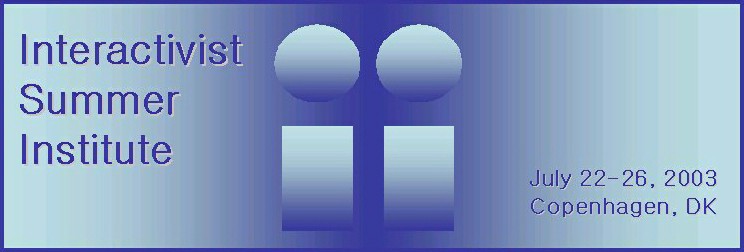In this paper I will try to give an interpretation of the work of Rizzolatti and his collaborators regarding mirror and canonical neurons, within the interactivist framework.
Canonical neurons (Rizzolatti et al 1988) are activated when the monkey performs finalized actions with some objects. Unlike the "pure" motor neurons, canonical neurons are activated also when those objects enter the visual field of the animal. It seems that the dynamics of the brain anticipates the future possible interactions and prepares the body accordingly.
Mirror neurons, on the other hand, are activated either when the animal (or human) performs certain actions with some objects or when the animal (or human) it is looking at somebody else performing those actions (Di Pellegrino et al, 1992; Rizzolati et al, 1996; Gallese et al, 1996). One can interpret these findings as being elements for proto-intersubjectivity.
Elsewhere (Stojanov, 1997, 1999, 2001; Kulakov and Stojanov, 2002), ignoring the research in mirror neurons, we argued for an alternative treatment of representation in AI. In contrast with the classical (ring-into-wax-impression) representations within AI, intrinsic or enactive representations (as we dubbed them) are contingent on the very embodiment of the agent and emerge in the process of agent-environment interaction. Among others, we based our research on the work of Piaget (1954), Merleau-Ponty, Bickhard (1993, 1995).
Here, I will try to fit mirror and canonical neurons findings at two different levels of the interactivist approach. First, on a conceptual level, I will argue that interactivism, as advocated by Bickhard, actually predicted similar mechanisms to account for various mental and social phenomena: from perception and learning to the emergence of social reality. I will propose various experiments and give explicit predictions, which then can be tested.
On another level, I will discuss the specific problems that emerge when one tries to implement an interactivist flavored representation, and how the empirical results in mirror and canonical neurons might constraint those realizations.
I will conclude the paper by discussing some related work. Fogassi (2002) one of the researchers of Rizzolatti’s group, discussing the implications of their research, comes up with conclusions strikingly similar to the interactivist commitment to process metaphicics and the emergent nature of representation. O’Regan and Noë (2002) with cleverly designed experiments convincingly argue in favor of a naturalistic, action based approach to representation and memory.
REFERENCES
Bickhard, M., “Representational Contents in Humans and Machines,” Journal of Theoretical and Experimental Artificial Intelligence, 5., 1993.
Bickhard, M., Therveen, L., Foundational Issues in Artificial Intelligence and Cognitive Science: Impasse and Solution, Elsevier Science Publisher, 1995.
Fogassi, L., “Il sistema motorio come metafora della realtà” in C. Morabito (ed.) La metafora nelle scienze cognitive, McGraw-Hill, Milano, 2002.
Kulakov, A., Stojanov, G., “Structures, inner values, hierarchies and stages: essentials for developmental robot architecture”, 2nd International Workshop on Epigenetic Robotics, Edinbourgh, 2002.
O’Regan, K., Noë, A., “A Sensory-motor account of vision and visual consciousness”, Behavioral and Brains Sciences, 24(5), 2002.
Piaget, J., Construction of Reality in the Child, Basic, New York, 1954.
Rizzolatti, G., Carmada, R., Fogassi, L., Gentilucci, M., Luppino, G., and Matelli, M. “Functional organization of inferior area 6 in macaque monkey. 2. Area F5 and the control of distal movements”. Experimental Brain Research, 71(3):491-507, 1988.
Rizzolatti, G., Fadiga, L., Matelli, M., Bettinardi, V., Paulesu, E., Perani, D., Fazio, G., “Localization of grasping representations in humans by:1 Observation versus Execution”, Experimental Brain Research, 111, 146-252, 1996.
Stojanov, G., “Embodiment as metaphor: Metaphorizing-in the environment”, C. Nehaniv (ed.) Lecture Notes in Artificial Intelligence, 1562, Springer-Verlag, Berlin, 1999.
Stojanov, G., “Petitagé: A Case study in developmental robotics”, 1st International Workskshop on Epigenetic Robotics, Lund, 2001.
Stojanov, G., Expectancy Theory and Interpretation of EXG Curves in the Context of Machine and Biological Intelligence, PhD Thesis, University in Skopje, 1997.
Di Pellegrino, G., Fadiga, L., Fogassi, L, Gallese, L., Rizzolatti, G., “Understanding motor events: a neurophysiologicals study”, Experimental Brain Research, 91, 176-189, 1992.
Gallese, L., Fadiga, L., Fogassi, L, Rizzolatti, G., “Action recognition in the premotor cortex”, Brain, 119, 593-609, 1996.
